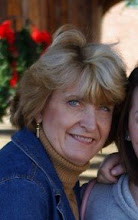
What you are looking at here is an area between the large buildings you saw in the previous pictures.
 To your right was the building that dealt with punishment. (as if these people needed anymore) As you look at the picture the dark stone is the place where they would shoot people for whatever reasons. The Nazis obviously needed a material that could handle the the stress of the frequent executions better than brick. Yet as you are draw closer to the wall you see hundreds of pock marks in the wall. You run your hand over the marks and you are shocked at the effect they have. I turned around and saw what was the last thing they saw. Then you look at the marks and the utter insanity, incomprehensibility of where you are standing wash over you. You walk away with no words or thoughts to absorb it all.
To your right was the building that dealt with punishment. (as if these people needed anymore) As you look at the picture the dark stone is the place where they would shoot people for whatever reasons. The Nazis obviously needed a material that could handle the the stress of the frequent executions better than brick. Yet as you are draw closer to the wall you see hundreds of pock marks in the wall. You run your hand over the marks and you are shocked at the effect they have. I turned around and saw what was the last thing they saw. Then you look at the marks and the utter insanity, incomprehensibility of where you are standing wash over you. You walk away with no words or thoughts to absorb it all. Then the last picture shows one of the rooms that faced the execution area where people heard and waited for their turn to stand in front of the grey stone.










































